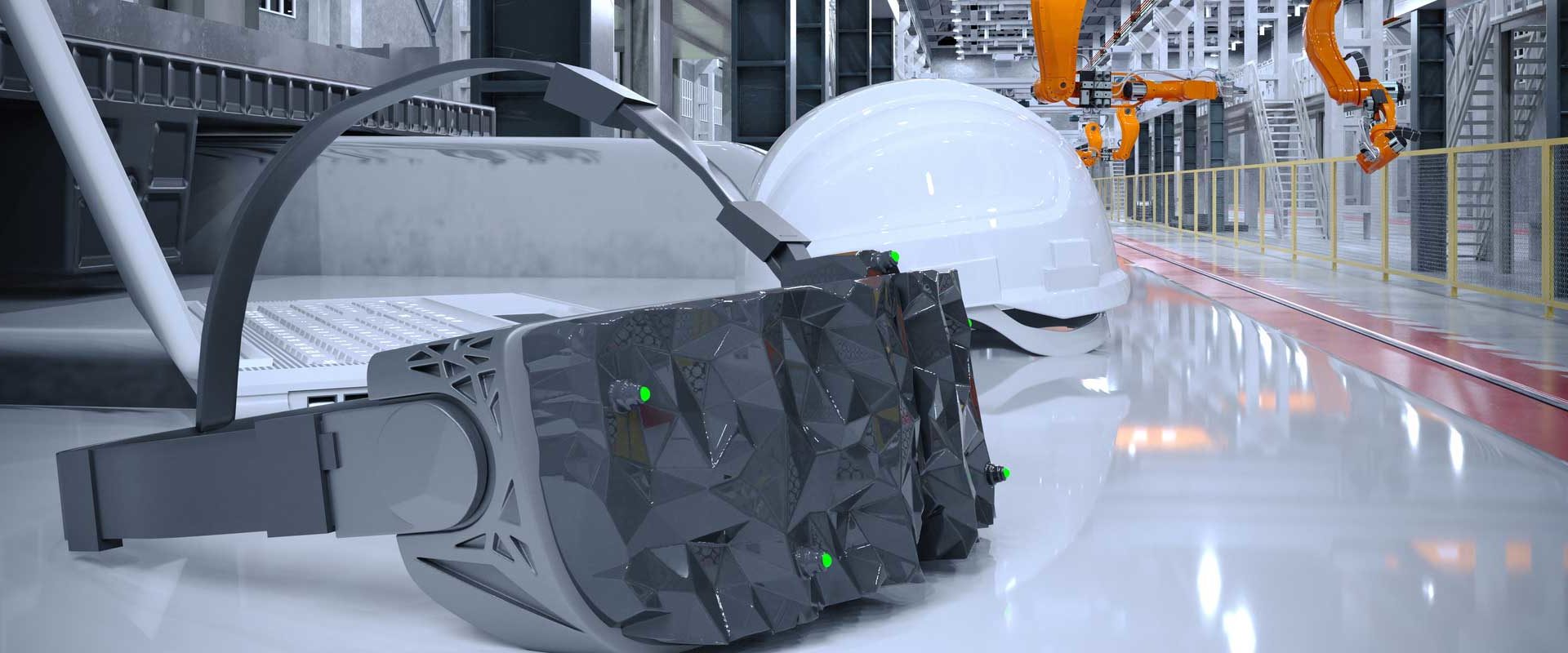Augmented reality glasses (Smart Glasses) have slowly been building momentum in the last 10 years, due to technological advancements and wide industry adoption. We first came across this technology in 2012 when Google released a beta of their Google Glass AR for developers. The device itself included a forward-facing HD camera, HUD (heads up display) and wireless connectivity to connect to your smart device.
Shortly after all the hype surrounding Google Glass, not much else happened until 2016 when Microsoft released their HoloLens, a mixed reality, augmented reality, head-mounted display. The Microsoft HoloLens was a further advancement from Google Glass by adding in more interactive functionality such as gesture control and voice control, whilst increasing the field of view and making it a truly hands-free device.
Since then, there has been an abundance of manufacturers developing AR devices for a wide range of applications such as healthcare, manufacturing, entertainment, education, and logistics. There is now a realisation that this technology can make a difference in industries and become a vital tool in assisting those in the workplace.
AR in healthcare

When thinking about the AR market, healthcare is not necessarily one that comes to mind. Needless to say, the following opportunities were identified for AR glasses to be an effective tool in the healthcare industry:
Emergency rooms: Staff can call for help or talk to staff in another room without picking up the phone. This allows them to keep both hands on the patient and avoid any contamination.
Surgery: Surgeons can use augmented reality to assist in the decision-making process of surgery using a medical platform called “pixel medical”. The system combines the camera vision with artificial intelligence to provide precision measurements whilst in surgery.
Emergency responders: First line responders could use AR smart glasses to capture information about a patient in real-time and send it to the hospital ahead of their arrival, which will then admit the patient.
Doctors: Medical professionals will be able to transcribe patient visits using voice technology. In addition to this, experts will no longer need to travel directly to patients. AR glasses will allow doctors to provide remote training or offer over-the-shoulder support to other medical professionals in real-time.
Furthermore, Doctors and professions will also see what the users can see with video software and share any key findings with the medical professional wearing the AR glasses. In turn, they will save healthcare systems a lot of time and money that could otherwise be spent on travel fares.
AR in warehousing

Automation in warehousing has been around for many years, mostly using robotic technology to manage warehousing stock logistics. However, much larger warehouse management systems are always looking to improve with the accuracy of stock picking and speed of delivering to the end customer. AR in warehousing improves the overall performance of the warehouse staff whilst increasing the overall order capacity.
AR glasses increase order picking accuracy and volume. More importantly, they improve warehouse safety by offering hands-free control at all times. No longer will warehouse staff require an RF/IR gun in hand. Soon, picking will be a hands-free operation.
Currently, there is a wide variety of AR and Vision Picking applications available for AR glasses. For example, Logistiview uses augmented reality overlays to help warehouse workers know which area to pick an item from. In addition to this, it tells them how many items to pick whilst operating hands-free.
The app combines AR, AI, and computer vision to provide an intuitive heads up display. This is overlaid across the user’s lenses. Furthermore, voice technology allows users to easily navigate AR and Vision Picking apps with voice commands.
Automotive AR

Car mechanics have always benefited from technological advancements. Many industry experts believe that cars are the most important 20th-century development, and there is plenty of evidence to support this theory. If you think about it, most people’s everyday lives come to a stop when their vehicle breaks down. Technology advancements in automotive AR accelerate how quickly a mechanic can fix your car.
Manufacturers design and build their car models in different ways. A BMW’s engine has little in common with a Ford’s. These differences are obvious in foreign imported cars. This presents a challenge with most mechanics from an independent garage, who may not have the knowledge or expertise to fix your car.
AR glasses technology will help change this challenge for car mechanics. With automotive AR smart glasses, your vehicle mechanic could receive live training from car manufacture whilst actively working on the car.
The process would be simple. The AR glasses would broadcast your mechanic’s video feed to the training representative. Simultaneously, a live feed of the vehicle representative would appear in your mechanic’s glasses. Resulting in the representative of the manufacturer quickly identify the problem and providing a solution.
Additionally, they could use animations to highlight specific parts, providing real-time guidance to mechanics. All these are accomplished whilst be completely hands-free, which as a mechanic, this is vital when carrying out a repair on a vehicle.
AR in entertainment

Concerts are great entertainment for the music industry, excellent quality music that is lively and full of music goers alike. Over the years this industry has changed, especially with much larger audiences and venues. Technology has been used as a tool to aid the entertainment value of concerts.
In 2011, Cold Play gave each member of the audience flashing wristband called Xyloband. As the concert was played, the flashing bands were synchronised to the music. The audience felt a part of the entertainment during the concert, and the technology used added a wow factor.
Smart AR glasses will eventually provide several benefits that tweak the excitement of being in the audience, whether you are sitting in the stands or on the front row.
AR glasses could be used to project the musician’s setlist during the concert, or the lyrics of the songs could be displayed. Those lesser songs could still have a sing-a-long fashion, adding to the overall excitement and atmosphere.
From a musician’s perspective, AR glasses could be used to weave visual elements into the show based on the songs’ theme or subject. You could even project the singer themselves into the stands, walking around. Add in price projections that hover above merchandise and real-time pop-ups detailing interesting facts that explore the inspiration behind hit songs, and you have the only way to experience concerts shortly.
Concerts are just an example of using AR in the entertainment industry. Still, other areas, such as movies and gaming, could also use this technology to enhance the user’s experience.
Are AR glasses already the next big thing?
The examples above would certainly emphasise the fact that industries are already implementing AR technology. Technology adds value to those industries and can significantly increase performance and save overall costs. However, the devices themselves can be costly, more than 1000 Euros. Most AR glasses will also rely on some software platforms and integration into the current existing platform within the workplace or industry. Finding the right balance will be vital for the future of AR technology.










